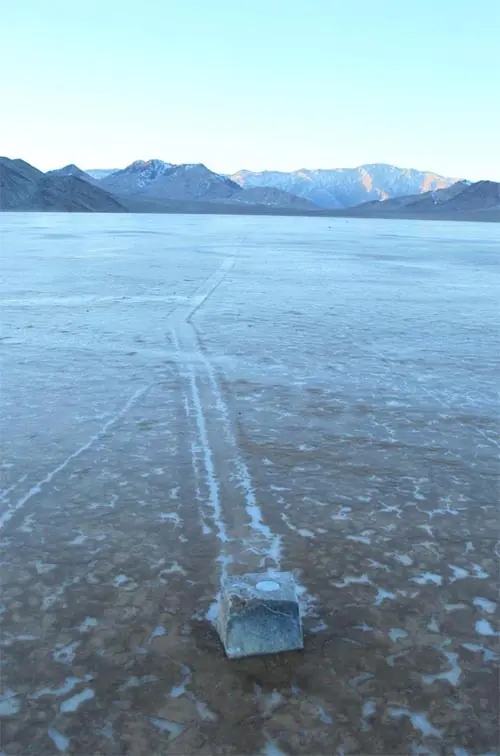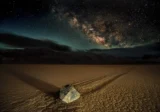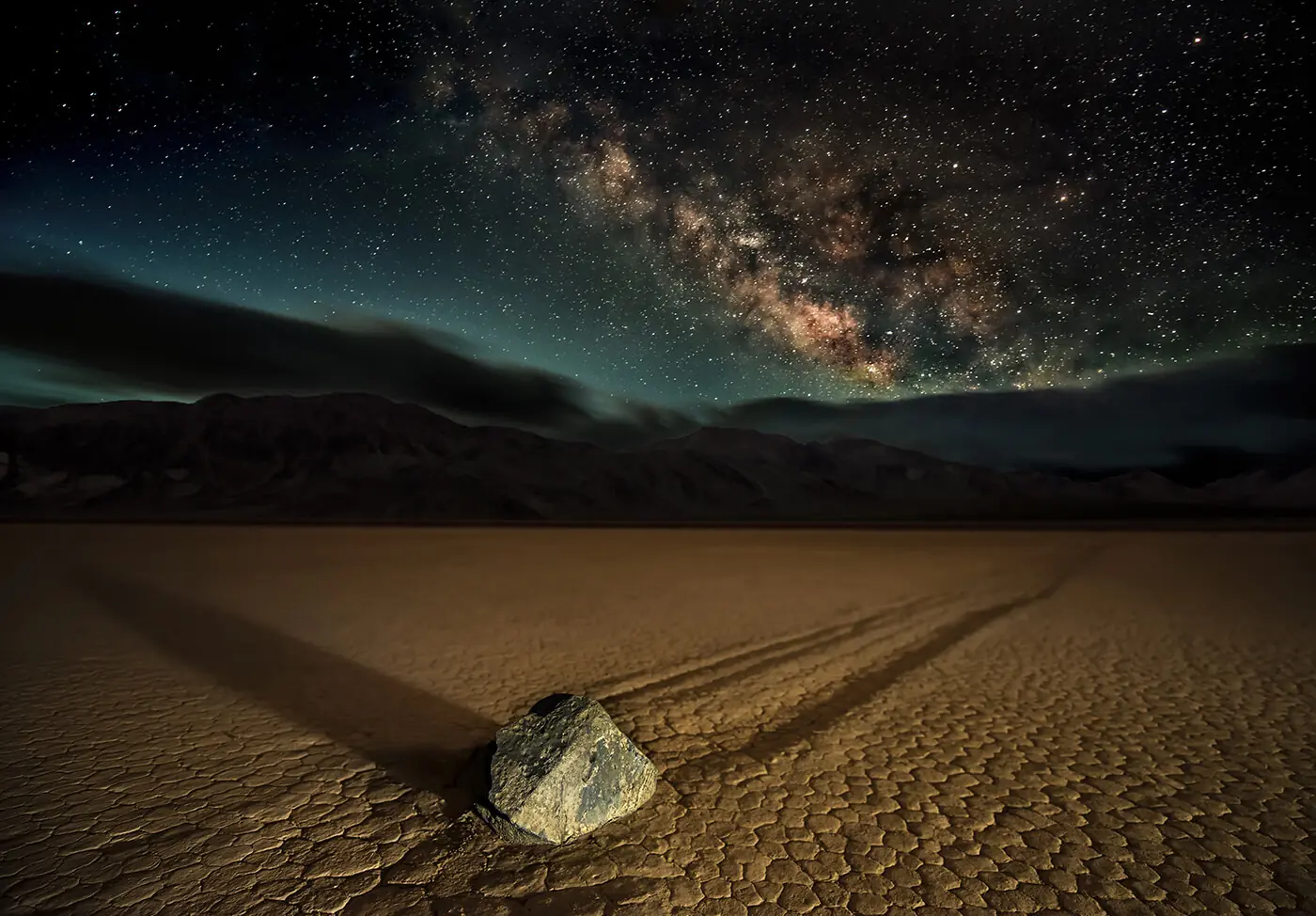
The Wandering Stones The Mysterious Moving Rocks of the Desert
In this article, I will explore the wandering stones of the desert, a phenomenon that has puzzled scientists for decades. Death Valley is a national park in California known as the hottest place in the world. These demanding conditions are caused by climatic and geographical factors. Death Valley lies between several mountain ranges, e.g., Sierra Nevada, which block clouds and humid air coming from the Pacific Ocean. When this air rises over the mountains, the moisture precipitates and falls as rain long before it reaches the valley. Only dry air reaches the lower parts of the valley. Death Valley is also the lowest place in North America -282 feet (- 86 meters) below sea level.
Since all the clouds dissolve outside the mentioned lowland, Death Valley has a clear sky for almost the entire year, and a large amount of sunlight reaches the surface, which constantly dries and heats it. The surrounding mountains capture hot air, which cannot escape, creating thermal traps. The highest temperature measured on Earth was recorded in Death Valley in 1913 and reached 134 °F (56.7 °C).
However, its biggest mystery is not the weather but the dried lake Racetrack Playa. It is in this flat desert area that there are floating stones that seemingly move by themselves without any apparent cause.
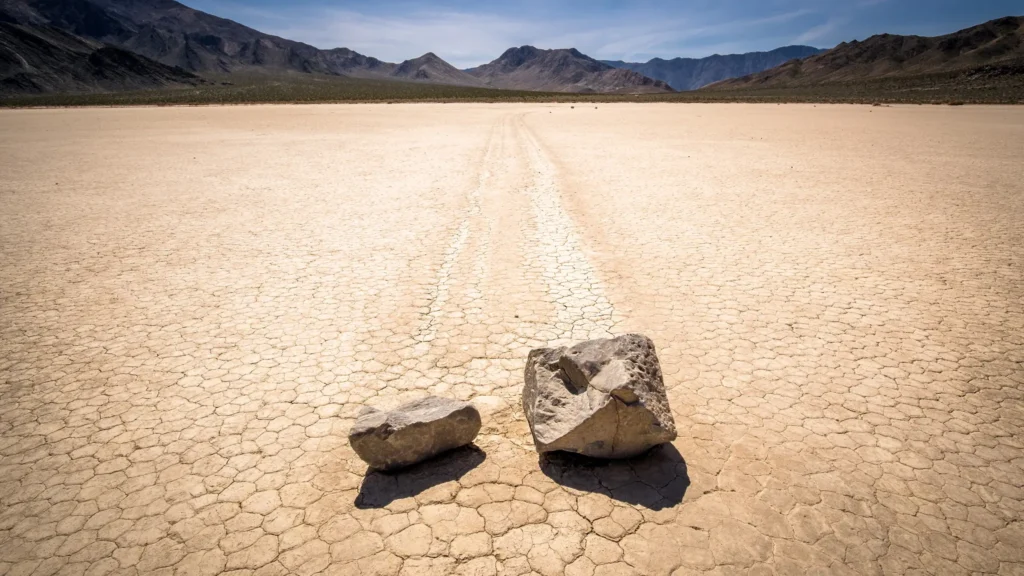
These rocks, known as “sailing stones“, are composed of dolomite and syenite, the same materials that make up the surrounding mountains. As a result of erosion, stones fall down until they remain on the surface of the dried lake. Rocks can reach different sizes, from several ounces to hundreds of pounds. Nobody has ever actually seen these floating stones move, but the traces created and left by the stones clearly show that they really do. Many of the rocks have left trails up to 1,500 feet long, which clearly suggests that they have moved over great distances from their original location.
The movement of these stones has been observed and studied since the beginning of the 20th century, and several theories have been proposed to explain them, ranging from likely to fantastic theory, including UFOs or magnetic fields. However, their movement was not fully explained until 2014, when scientists, after three years, managed to capture the movement of the stones using time-lapse photography.
By analyzing records and measured conditions, a group of patient scientists, Richard D. Norris and his cousin James M. Norris, found that the movement of the rocks occurs only under a very rare combination of winter conditions.
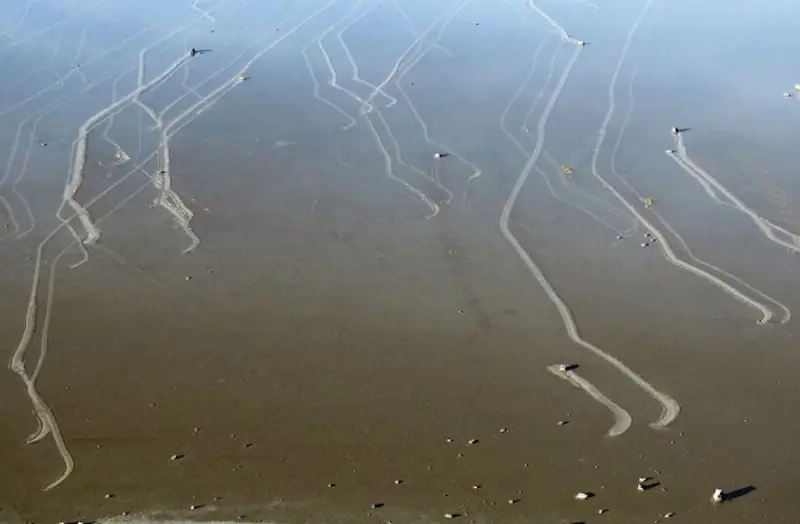
Why is this combination rare?
During the winter months, specific conditions must align, such as the correct temperature for ice formation, a small amount of water, sufficient heat for melting, and at the same time mild wind. The whole process is as follows: a small amount of water can collect during the winter months. Subsequently, low temperatures overnight create a very thin 0.12 – 0.24 inches (3 – 6 mm) but wide (several yards) layer of ice on the desert surface. With the arrival of the morning and the sun’s rays, the ice gradually melts and cracks into large fragments.
Unlike ice in rivers, this ice is extremely thin, so it floats on the surface of the shallow water layer. The wind in the valley can blow at a speed of 11 – 18 mph and moves the plates of ice on the wet soil along with the stones at a speed of approximately 10 – 16 feets per minute. When the water completely evaporates, only the long traces in the dry mud remain visible, each stone having its own unique pattern of movement depending on how the wind was blowing. Some move straight, others turn, or make circles.
How was the research on wandering stones conducted?
In 2011, scientists established a meteorological station in the desert and also added 15 of their own stones equipped with GPS to track movement. They then observed time-lapse photographs that captured the movement of these rocks between December 4 and December 20, 2013. They thus became the first people in recorded history to see the stones in motion. Scientists also found that these stones move only once every 2 or 3 years. It is, therefore, truly a very exceptional phenomenon.
